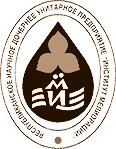Keywords: reclaimed anthropogenically transformed peat soils, yield, microelements, winter grain crops, crop structure, foliar top dressing, phase of plant development
Мелиорация.– 2024. – №2 (108). – P 32–38
On anthropogenically transformed peat soils, the maximum yield of winter triticale grain (54.7 c/ha) was obtained by introducing Adobe profit into the tillering phase and entering the tube, and the composition Ecogum Mn + Ecogum Cu + Microstim B into the earing phase. The increase was 41.7%. The same yield (59.7 c/ha) was obtained when applying Ecosil + Ecohum FC + Ecohum Complex (the Time of the Resumption of Spring Vegetation and outlet into the tube) + Ecosil + Ecohum Complex (earing). Winter rye when introduced into the tillering phase of Ecosil+Adobe profit + Ecogum Mn + Ecogum Cu + Microstim B generated a yield of 51.4 c/ha. The increase in yield was obtained by increasing the length of the ear by 5.7%. The introduction of Ecosil + Adobe profit + Ecogum Mn + Ecogum Cu + Microstim B into the tillering phase and exit into the tube and Ecosil + Ecogum Mn + Ecogum Cu + Microstim B into the earing phase ensured a grain yield of 53.4 c/ha.




